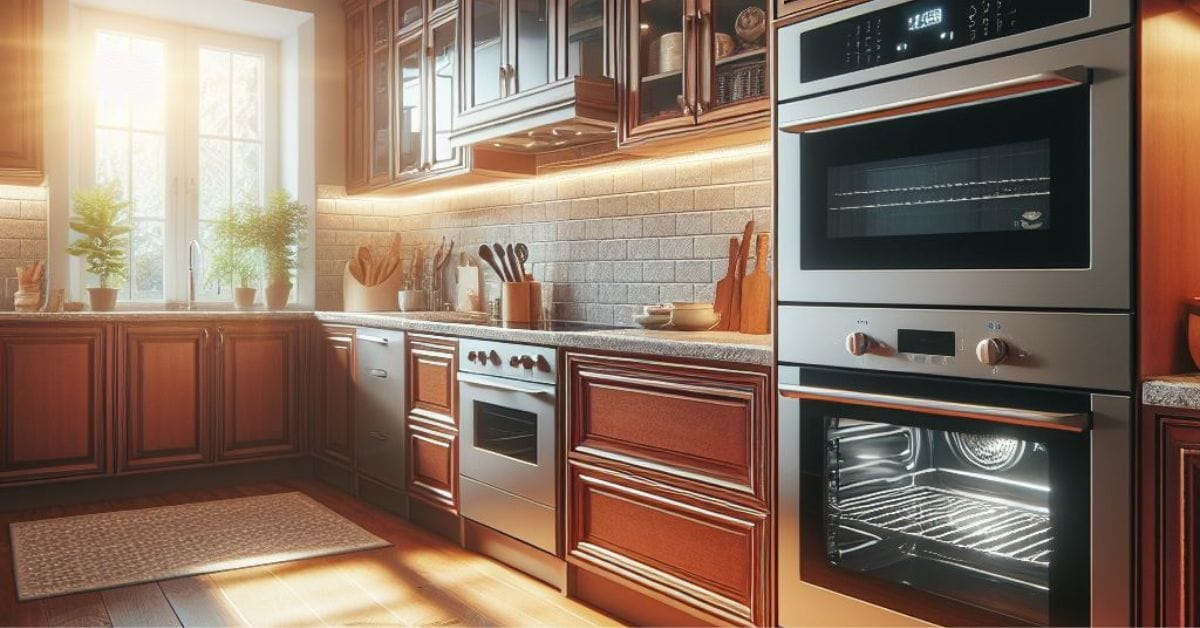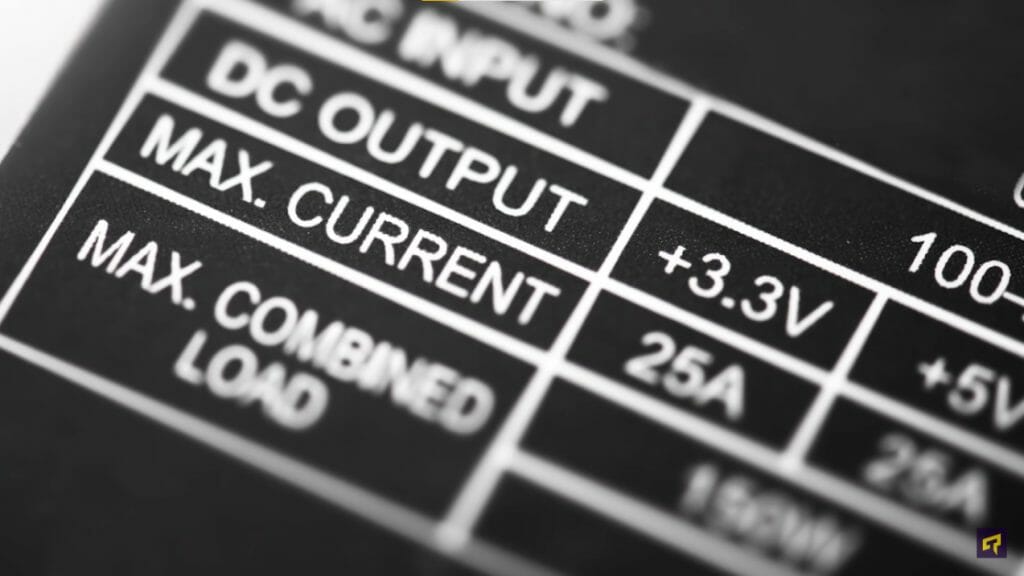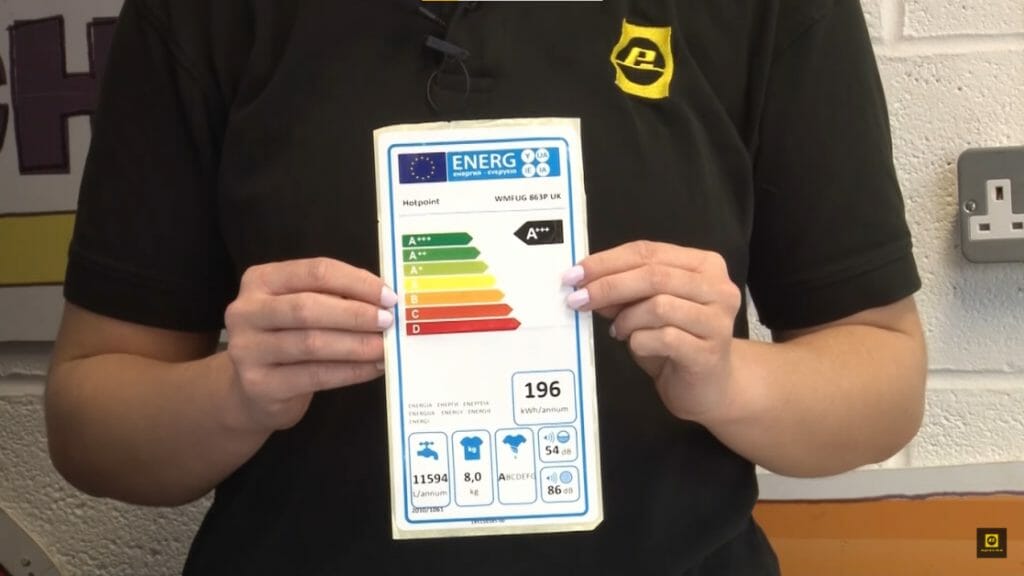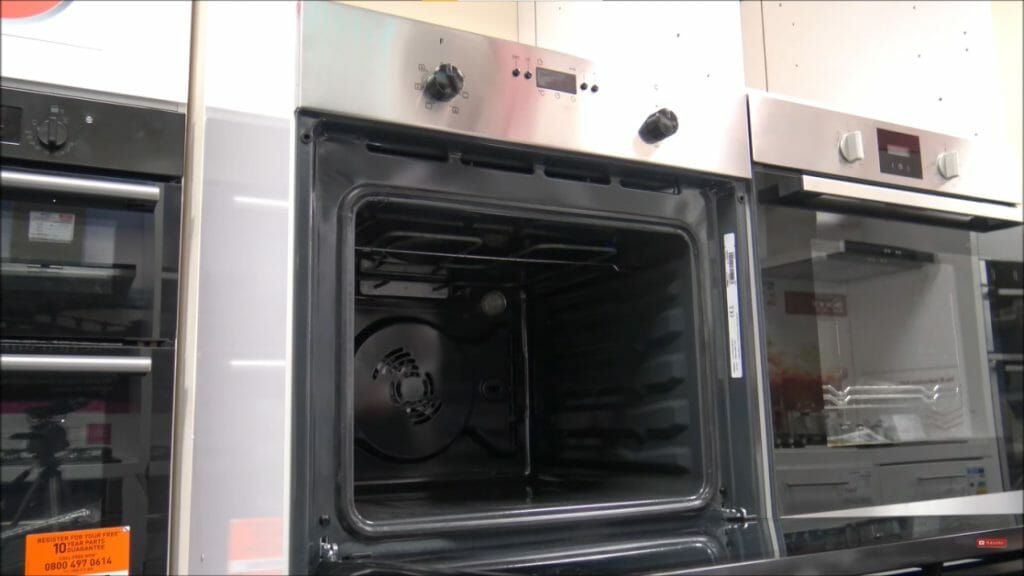How Many Amps Does an Electric Oven Use? (Guide)

Ever wonder how many amps your electric oven pulls when whipping up your favorite dish? I’ve got the scoop for you.
On average, an electric oven can use 20 to 60 amps. The specific amount of amps depends on the electric oven’s size and model. The exact amp value is written on the circuit parameters label or the user’s manual. However, you’ll have to calculate the amp value if it’s not indicated on the label.
In this article, we’ll dive into the world of electric ovens and their power usage. Knowing your oven’s amp usage isn’t just for tech nerds or electricians. So, let’s turn up the heat and get started!
What is an Amp Rating?

Let’s make this simple. When discussing an appliance’s amps rating, we look at how much electricity it pulls through its circuit.
Think of it as a team effort: voltage, power, and current. Voltage is the push that gets electricity moving through the wires. The current, which we measure in amps, is the electricity that flows to your device. Power, or wattage, is what your appliance needs to run.
I’ve been around the block and seen what happens when things go wrong. If you hook an oven to an outlet that’s not strong enough, it won’t heat up properly. But you’re asking for trouble if you connect it to an outlet that can’t handle its power needs. You could overload your circuit, leading to a power outage or even a fire.
So, here’s the deal: ensure you know the right amps for your oven. It’s key for making it work right and keeping your home safe. A little effort in understanding this can prevent a whole lot of problems. Trust me, it’s worth it.
Average Amps Rating of Electric Ovens
Let’s talk about the power needs of electric ovens. In my experience with kitchen makeovers, I’ve seen that electric ovens usually need between 20 to 60 amps. It’s all about the size and how powerful the oven is.
Take your regular kitchen oven, for example. These guys usually consume around 1,800 to 5,000 watts of power, translating to about 21 amps. It’s pretty hefty, right? Then there’s the microwave oven, a bit lighter on the power, using between 800 to 2,000 watts, coming in at around 10 amps.
Here’s the deal: these are average numbers for ovens in the U.S. What is the real amp rating of your oven? That depends on how much voltage and wattage it needs. I’ve learned that you must do some math to determine the exact amps. More power-hungry appliances will naturally need more current to do their job.
In my builds, I always make sure to check these numbers. Matching the oven’s power needs with the right amp rating is key to a safe and efficient kitchen. You don’t want to be halfway through cooking a meal and find out your oven’s not getting enough power!
Calculating Your Electric Oven’s Power Usage: A Step-by-Step Guide

Knowing how many amps your electric oven uses can seem like a task reserved for tech buffs or tradespeople, but trust me, it’s anyone’s game! So, how do you determine the amp usage of that big metal box that perfectly cooks your turkey? Let’s break it down step by step.
Your first job is to find the wattage of your oven. Typically, you’ll find this information on a sticker or plate on the back of the oven, but if not, a quick internet search for your oven’s model should do the trick!
Wattage is the amount of power your appliance uses. If you’ve found the wattage, you’re halfway there! Let’s dive into some simple math. Don’t worry, it won’t get too brain-busting.
Your home’s electricity is likely 120 or 240 volts in the United States. To calculate the amperes, divide the wattage by the voltage. Let’s put that into context with an example:
- Oven Wattage: 2400 Watts
- Home Voltage: 240 Volts
Here’s the calculation in a neat markdown table:
| Oven Wattage | Home Voltage | Ampere |
|---|---|---|
| 2400 | 240 | 10 |
So, a 2400-watt oven on a 240-volt circuit would use 10 amps.
And there you have it. Simple, right?
This tells you that, with a 10-amp oven on a 240-volt circuit, you’d have 20 amps of the standard 30-amp circuit left for other appliances. That’s a great starting point for planning your kitchen’s electrical layout or understanding your energy bill. You now hold the power—literally!
Factors that Affect the Amps Requirement of Electric Ovens

When figuring out how much power an electric oven needs, there are a few key things I always look out for.
Oven Size and Power Needs: Bigger Means More Electricity
The first thing I always look at is the size of the oven. In my experience, larger ovens need more oomph to reach and maintain high temperatures. They generally come with more burners, meaning they pull more electricity.
Heating System Efficiency
Next up is the type of heating system used by the oven. This is crucial because some systems are more power-hungry than others. I’ve seen that the choice of heating system significantly impacts the overall power consumption of the oven.
Usage Frequency: How Often You Cook Matters
How often you use your oven is another key factor. More frequent use typically translates to more power needed over time. From my work with various ovens, it’s clear that those used more regularly tend to consume more power.
Energy Efficiency: The Game-Changer in Electricity Use
This is a big one. The efficiency rating tells you how much power is lost while the oven runs. In the world of appliances, this is a game-changer. For example, a standard oven might have an efficiency of around 12%, which isn’t great when you compare it to an air fryer up to around 60% efficiency.
In my builds, I always aim for the most efficient appliances – it saves on the bills and is better for the environment, too.
Deciphering the Impact of Oven Size and Type on Amp Usage
Let me walk you through something I’ve learned about electric ovens and their amp usage over the years. It’s a mix of size, type, and other things that can affect how much power your oven is pulling.
First up, let’s talk about size. In designing and renovating kitchens, I’ve noticed that the bigger the oven, the more power it needs. That makes sense. A large oven that can roast a turkey for a big family gathering will need more juice than a small oven for quick meals.
Now, about the types of ovens. You’ve got your convection ovens, conventional ones, and toaster ovens. Here’s how they stack up in terms of amp usage:
- Convection Ovens: These guys are pretty efficient. Their fans spread the heat evenly, typically using about 15 amps.
- Conventional Ovens: These are your standard kitchen ovens. Depending on their size, they can vary greatly, using anywhere between 10 to 50 amps.
- Toaster Ovens: Toaster ovens usually sit in the 5-20 amp range on the smaller end. Perfect for those quick, small meals or heating leftovers. Plus, they’re a great space-saver.
Remember, these numbers aren’t set in stone. They can vary based on the oven’s model, age, and energy-efficient settings. When working on a kitchen project, I always check these specs to ensure everything will run smoothly and safely.
Knowing about your oven’s amp usage isn’t just for figuring out your energy bill. It’s super useful when you’re planning your kitchen layout or even when you’re thinking about upgrading your oven. You want to ensure your kitchen’s ready to handle whatever you’re cooking up!
Safety Tips
So, folks, you’re now armed with all the information on how many amps your electric oven uses. But let’s not forget an equally critical piece of the puzzle – safety. It doesn’t matter if you have the most energy-efficient oven on the planet if you’re not using it correctly.
- Steer clear of water. Water and electricity don’t mix. Something as innocent as damp hands can lead to a serious shock – or worse. Always ensure you’re dry as a bone before even considering operating your oven.
- Don’t overload the circuit is another golden rule. A burst pipe is a messy problem, but a burst circuit is a whole wolf of a different pack. If your oven uses close to the limit of your circuit capacity – remember that 10 amp example from earlier? – be extremely mindful of what else is on the same circuit.
- Proper insulation – I can’t stress this enough. Ever seen one of those old-time Westerns where the varmint touches the wrong wire? It’s not pretty – and in the real world, it’s downright dangerous. If your oven isn’t insulated properly, it’s time to pull up your socks and get to it.
- A very important yet easily neglected safety measure is keeping the oven clean. A greasy oven isn’t just repulsive; it’s prime real estate for a fire. Regular cleaning extends your oven’s lifespan and ensures it functions safely.
Those are some basic safety tips to remember while using an electric oven. There are more out there, I assure you. Stay safe, folks, and let’s handle these kitchen appliances correctly.
Maintenance Tips for Electric Ovens
Maintaining your electric oven is key to ensuring it operates efficiently and within its amp usage specifications. Here’s a straightforward guide to help you keep your oven in top shape.
Let’s break down the essential maintenance tasks into an easy-to-follow schedule:
| Maintenance Task | Description | Recommended Schedule |
|---|---|---|
| Regular Cleaning | Clean the interior to prevent grease and food particle buildup, ensuring efficiency and safety. | Every 3-4 months, or more frequently, for heavy use. |
| Inspecting and Replacing Elements | Check the heating elements for wear or damage, as they are crucial for proper oven operation. | Annually or as soon as you notice the damage. |
| Seal Check | Ensure the seal around the oven door is intact to prevent heat escape. | Every 6 months, or if heat leakage is detected. |
| Calibration | Check the oven’s temperature accuracy for efficient cooking. | Annually, with an oven thermometer. Recalibrate if necessary. |
| Internal Fan Maintenance | For convection ovens, keep the fan clean and functional for even heat distribution. | Every 6 months, especially with frequent convection use. |
| Professional Inspection | Have a professional inspect the oven, particularly the electrical components. | Every 2 years or immediately if significant issues arise. |
Following these maintenance tips ensures your electric oven operates efficiently, stays within its amp usage specifications, and serves you well for many future meals. Remember, a little upkeep goes a long way in appliances.
Frequently Asked Questions
- Do Ovens with Higher Amp Ratings Cook Better?
- Not necessarily. An oven’s cooking performance is not solely dependent on its amp rating. Factors like temperature control, heating element quality, and overall design are more critical for cooking efficiency.
- Can I Install a High-Amp Oven in an Older Home?
- It’s possible, but you should first consult with a qualified electrician. Older homes may have outdated electrical systems that might not support high-amp appliances safely. An electrician can assess and upgrade your home’s electrical capacity if necessary.
- Can Frequent Use of My Oven Affect Its Amp Usage Over Time?
- Frequent use won’t necessarily change the amp usage, but it can affect the oven’s efficiency and lifespan. Consistent high usage might lead to quicker wear and tear of components, which might indirectly impact energy consumption and efficiency.
- Should I Upgrade My Electrical System for a New High-Power Oven?
- It’s a good idea to consult an electrician when installing a high-power oven, especially if your current electrical system is old or hasn’t been assessed. An upgrade might be necessary to accommodate the new appliance safely.
- Can I Use an Extension Cord with My Electric Oven?
- Using an extension cord with an electric oven is generally not recommended due to the high power requirements of the oven. It’s best to plug the oven directly into a properly rated wall outlet to ensure safety and efficiency.
References
Studies:
- Energy Consumption Comparison. https://houseax.com/does-electric-oven-consume-more-electricity/
Organizations:
- U.S. Department of Energy. https://www.energy.gov/energysaver/gas-and-electric-ovens-stoves-and-ranges
Website Resources:
- EnergySage. https://www.energysage.com/electricity/house-watts/how-many-watts-does-an-electric-oven-and-stove-use/
Video References:
Techquickie
eSpares
Lords Electrical
